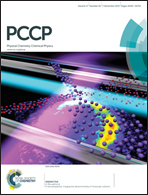ZnO nanoflowers with single crystal structure towards enhanced gas sensing and photocatalysis
Abstract
In this paper, ZnO nanoflowers (NFs) were fabricated by thermal decomposition in an organic solvent and their application in gas sensors and photocatalysis was investigated. These single crystal ZnO NFs, which were observed for the first time, with an average size of ∼60 nm and were grown along the {100} facet. It was suggested that oleylamine used in the synthesis inhibited the growth and agglomeration of ZnO through the coordination of the oleylamine N atoms. The NFs exhibited excellent selectivity to acetone with a concentration of 25 ppm at 300 °C because they had a high specific surface area that provided more active sites and the surface adsorbed oxygen species for interaction with acetone. In addition, the ZnO NFs showed enhanced gas sensing response which was also ascribed to abundant oxygen vacancies at the junctions between petals of the NFs. Furthermore, ZnO–reduced graphene oxide (RGO) composites were fabricated by loading the ZnO NFs on the surface of the stratiform RGO sheet. In the photodegradation of rhodamine B tests, the composite revealed an enhanced photocatalytic performance compared with ZnO NFs under UV light irradiation.


 Please wait while we load your content...
Please wait while we load your content...